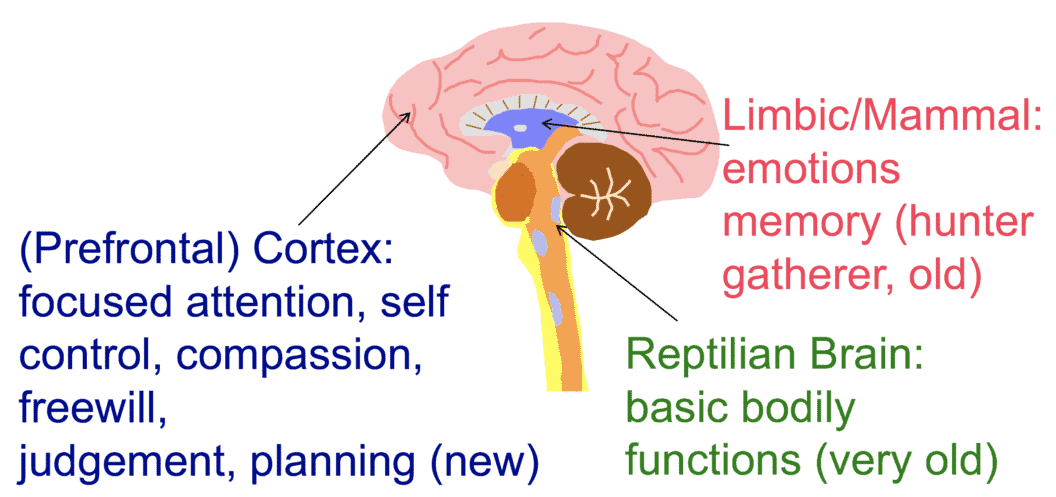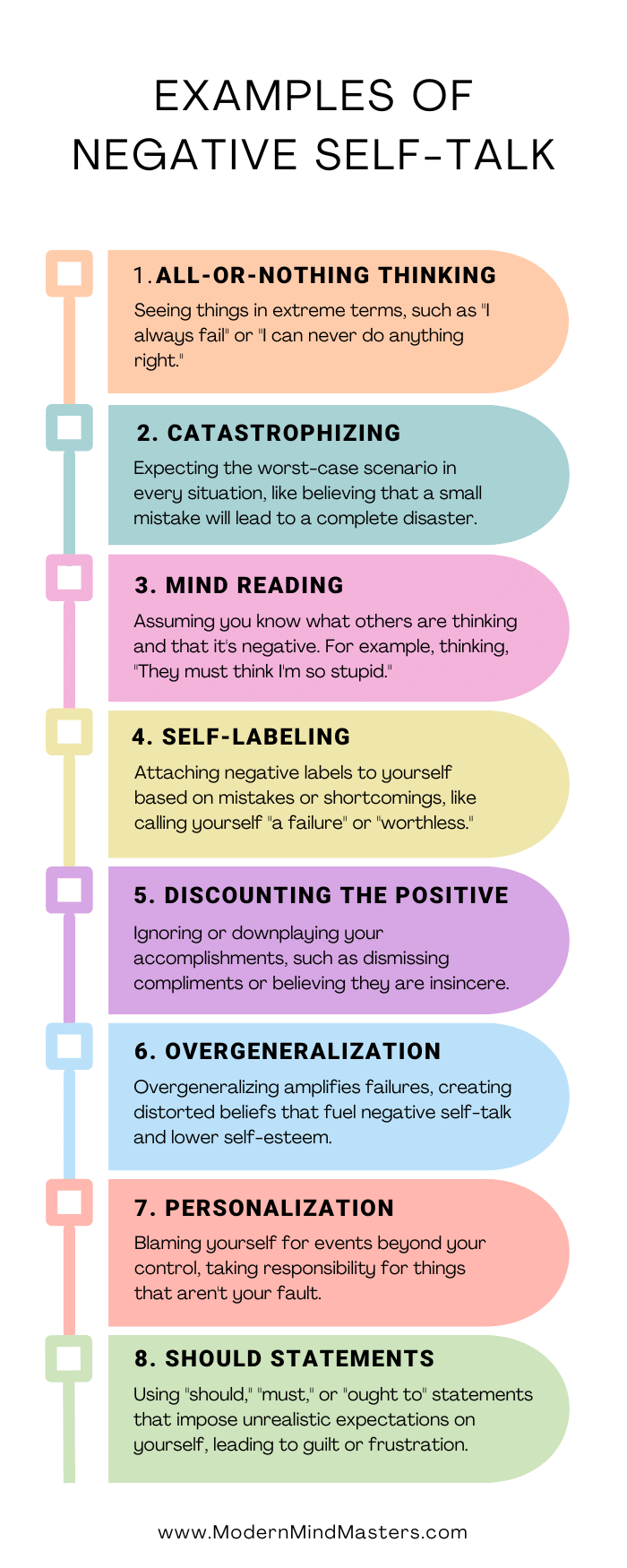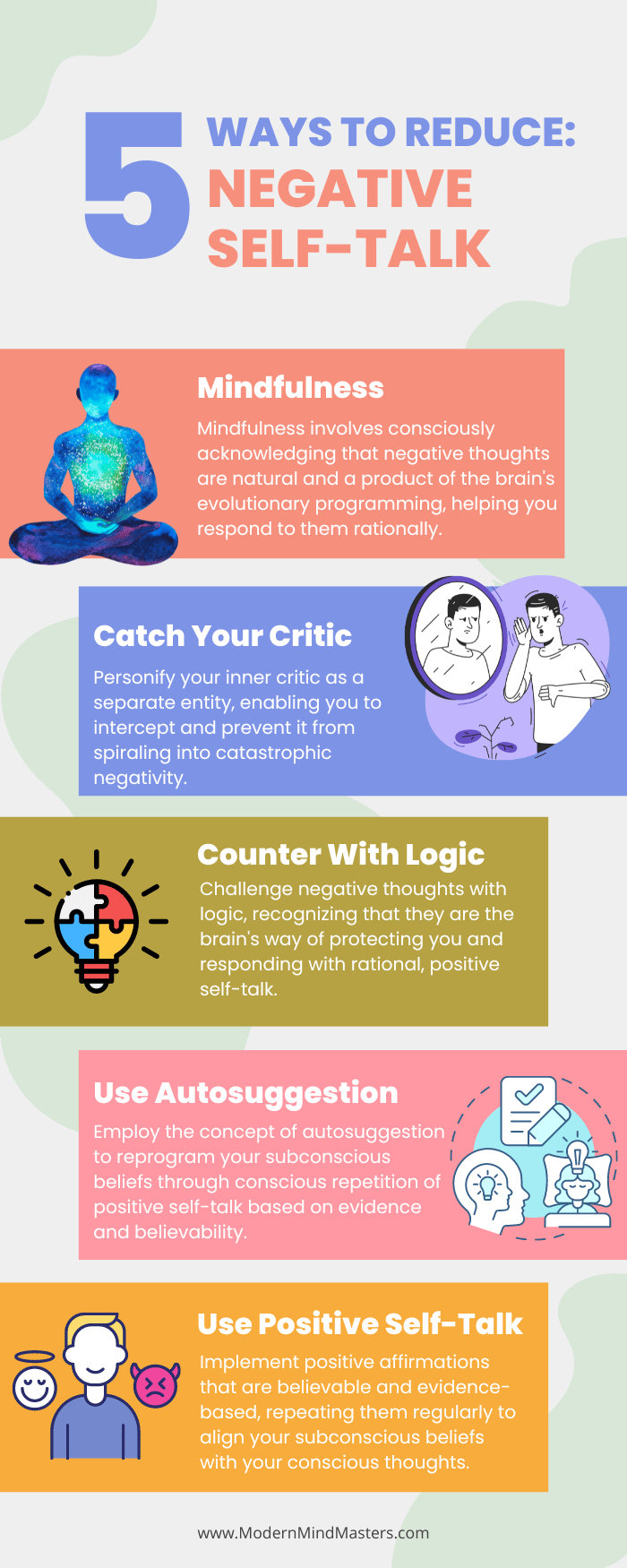
Food as Medicine: A Nutritional Perspective on Treating Anxiety
Explore how diet, from omega-3s to ketogenic diets, impacts anxiety, offering a holistic approach to mental health through nutritional psychiatry.

Negative thoughts lie all over the world; in just two countries, Afghanistan and Lebanon, more people live in misery than elsewhere on the planet. A 2021 poll by Gallup showed that 80% of Afghans were worried, 74% stressed, and 61% sad – levels of negativity that no other population in the world has ever reported feeling.
To tell these poor people that they can stop their negative thoughts and choose to think positively is useless at best, and insulting at worst. For as long as we are human, capable of feeling thoughts and emotions, and subject to human instincts, we will encounter negative thoughts no matter how much we try to avoid them.
This article will explore the psychology and neurology behind negative self-talk, why it remains so common, how you can learn to live with it, and how you can minimize its negative effects to live a happy and fulfilling life.
Negative self-talk is a form of intrapersonal communication, the process by which you communicate with yourself, acting as both sender and receiver of messages. It also encompasses the use of unspoken words to consciously engage in self-talk and inner speech.
This seems illogical, right? Why would your brain send messages that it doesn’t enjoy receiving? Why does your mind tell you “You’re not good enough to do this” when you are the victim of this negative message?
While you collectively are the sender and receiver, negative thoughts stem from different parts of the brain that are not always in direct communication and alignment. You can think of these groups of brain components as independent – the conscious and subconscious minds.
While conceptual, these elements distinguish parts of the brain that are under our immediate conscious control, such as the prefrontal cortex, and those that are not, such as the limbic system.
Ignoring negative self-talk is not only futile, but it can also be dangerous. We need an inner critic to help us evaluate environmental dangers and threats. Trying to ignore the inevitable will only worsen mental health conditions such as depression.
Instead, we need to acknowledge negativity’s presence, understand the natural rationale behind it, and learn techniques to evaluate it rationally, where we can then begin to manage it.
The hard truth is that negative self-talk is natural and cannot be ignored. Instead, we must learn to accept self-talk and manage its effects, which we can do with the right knowledge, tools, and attitude.

Negative self-talk usually results from the bad habit of engaging in critical, unhelpful, or self-defeating thoughts about ourselves. Some examples of negative self-talk might include:
All-or-Nothing Thinking: Seeing things in extreme terms, such as “I always fail” or “I can never do anything right.”
Catastrophizing: Expecting the worst-case scenario in every situation, like believing that a small mistake will lead to a complete disaster.
Mind Reading: Assuming you know what others are thinking and that it’s negative. For example, thinking, “They must think I’m so stupid.”
Self-Labeling: Attaching negative labels to yourself based on mistakes or shortcomings, like calling yourself “a failure” or “worthless.”
Discounting the Positive: Ignoring or downplaying your accomplishments, such as dismissing compliments or believing they are insincere.
Overgeneralization: Drawing broad conclusions from a single negative event, like believing that one rejection means you’re unlovable.
Personalization: Blaming yourself for events beyond your control, taking responsibility for things that aren’t your fault.
Should Statements: Using “should,” “must,” or “ought to” statements that impose unrealistic expectations on yourself, leading to guilt or frustration.

The biggest misconception surrounding negativity is that it results from a weak mind when, in fact, it is the opposite. Negative self-talk is a natural phenomenon that stems from a healthy mind – we just misunderstand it.
The brain contains many separate components that perform specific tasks but work synergistically in a vast interconnected network, like how many computer chips in a car perform specific functions but all work together to produce a comfortable and reliable ride.
Subconscious thoughts and behaviors are instilled in us through part genetics and part experiences, which occur without our conscious awareness. This includes autonomic behaviors, such as blood pressure regulation, breathing, and digestion, and also mindsets, such as a fear of dogs caused by negative experiences during childhood.
The brain performs these behaviors without our conscious input to free up precious cognitive resources to focus on more pressing issues. If we consciously processed every bodily function, our entire day would be consumed just trying to live.
Subconscious thoughts and feelings stem from primal areas of the brain, such as the basal ganglia and limbic system. When stressed, such as hearing a loud noise or a threat coming towards you, the sympathetic nervous system immediately fires a delicately orchestrated burst of chemicals, such as adrenaline and dopamine, that activate your fight or flight system.
Subconscious thoughts occur faster than conscious ones. This is essential for surviving – it is why we can jump out of the way of a moving vehicle before we have the chance to think about it.
Any emotional reaction, such as engaging in road rage, even if you later regret it, is the result of a perfectly healthy subconscious mind doing what it has evolved to do – survive. We may hate the results, but we cannot blame our healthy minds for trying to keep us safe.
Many subconscious thoughts are primal impulses and occur faster than you could ever consciously react to them. They are deliberate and a way of keeping you safe from threats that arise in mere fractions of a second.
The problem is that while these impulses once helped us survive, they often make it difficult to thrive. In modern society, many of our worries no longer regard physical safety, but our brains still often perceive it that way.
For example, many fear presenting in front of their peers. While your conscious mind acknowledges that it shouldn’t be a big deal, and you should have more confidence, your subconscious mind is still thinking that there is a risk of social exclusion should you mess up. In more primeval times, isolation from the safety of your troop significantly increased the chances of harm, which your instincts try to fight at all costs.
You cannot stop these feelings, however, nor should you want to; as long as you are a healthy human with a healthy brain, you will have these impulsive thoughts beyond your control. Accept this, and you will relieve much unnecessary mental suffering.
Even though we cannot prevent primal and impulsive thoughts from entering our minds, it doesn’t mean we cannot choose how we react to them. In fact, how we consciously respond to them is the only power within our control.
When giving a speech to a large crowd, for example, we may feel nervous and afraid. What if you forget your words or say something stupid? This not only reduces a person’s confidence and performance but often prevents them from attempting it at all.
By simply being aware that these are the primal reactions from the emotional limbic system, and that they are perfectly natural, we can reassure ourselves that our reaction is normal and that the physical threats the subconscious is concerned about are not actually physical. You are in no harm.
This won’t stop you from being nervous – conscious thought alone is not powerful enough to override the parasympathetic nervous system – but it will at least ground you and prevent you from circling toxic thoughts and worsening the situation.
Remember, these thoughts result from a perfectly natural and healthy limbic system, just out of date for modern demands. We cannot prevent these thoughts from occurring, but we can reason with them, and consciously choose how to best act upon them. With time and experience, they will become less severe.
To add fuel to the fire, the negativity bias is the notion that negative stimuli, such as unpleasant thoughts, emotions, or social interactions, have more of an effect on us than neutral and positive ones, and that we tend to dwell on them for longer.
With so many environmental stimuli, from strange sounds to watching our surroundings for hazards, we need a mechanism to not only draw our attention immediately to potential threats but rank them rapidly based on severity.
For example, if a gorilla sees food, but it is in a neighboring troops’ territory, the negativity bias will likely override the positive emotion from the food with negative threats from a rival fight. It is a way of establishing a hierarchy of threats.
If the gorilla will soon starve to death, however, then starvation is the higher threat, and it will likely risk physical confrontation.
When you feel yourself succumbing to negative thoughts and self-talk, or feeling like a failure, remember that these are subconscious thoughts stemming from primitive parts of the brain. They are perfectly natural and a sign of a healthy mind doing what it is programmed to do – ensure your survival.
Unfortunately, society has civilized much quicker than the brain has evolved, and what your brain perceives as threats to survival and more likely to prevent you from thriving.
Fortunately, there are measures we can take to reduce the effects of negative thinking.

Mindfulness is the practice of actively engaging your conscious mind to assess emotional subconscious thoughts rationally.
By understanding what you now know about primal human traits, you can consciously remind yourself that these unpleasant negative thoughts are not only natural (and would occur in every healthy brain) but also a sign of a healthy mind acting as it has been programmed to do.
If negative subconscious thoughts occur faster than we can consciously choose to react to them, then we cannot be blamed for their creation any more than we can blame ourselves for the weather or war in the middle east, both of which are equally beyond our control.
Do not blame yourself for these thoughts, for they are natural. Instead, think of them as an ill-educated advisor trying to keep you from harm, but doesn’t understand the difference between physical threats and emotional ones.
You can think of these negative voices as your inner critic. By personifying your critic, you can distinguish your inner voice as a separate entity. While you cannot prevent your inner voice from speaking, you can catch it before it starts catastrophizing and starts a negative spiral of doom.
Once you have caught your critic, counter it with logic. When it says “You won’t get this job because you are not qualified”, counter with “It is natural for me to have these unpleasant thoughts and emotions; it is my brain’s primal way of keeping me safe. In this situation, I am not in danger, so I will try my best and that’s all I can do”.
This won’t stop negative self-talk altogether – emotion is far too powerful to simply ignore – but it will catch your reactions before they escalate, and provides the best place to start manually activating positive self-talk.
Positive self-talk may seem like wishful thinking to many, and it can be when not done correctly, but psychology does provide a sound scientific backing for it (the mechanism behind it, autosuggestion, has been influencing your subconscious thoughts and habits since you were born.
French psychologist Émile Coué developed the idea of autosuggestion – the subconscious adoption of an idea that one has originated oneself. His method relied on the belief that “any idea exclusively occupying the mind turns into reality”, limited by what is physically possible.
For example, you may be able to reduce the pain associated with arthritis by firmly believing in the ability to do so, so long as the body is able to physically overcome or control it. It would not be possible to grow a new foot, however, no matter how firmly you believe it.
It is the same mechanism behind the placebo effect, but instead of using a placebo, such as a sugar pill, we use the knowledge and belief of autosuggestion itself.
Positive affirmations – statements that can help you to challenge and overcome self-sabotaging negative thoughts – use the mechanism of autosuggestion to overwrite negative subconscious beliefs and replace them with positive ones.
Where this differs from wishful thinking, however, is that you must consciously accept the idea of positive autosuggestion; if the conscious mind does not believe then the subconscious most certainly will not.
Positive affirmations such as “I am the best candidate for this job position” will not work because you cannot believe with conviction that this is true. You have no idea about other candidates or what your interviewer will think.
Instead, successful self-talk might be “I am a good candidate for this position, and stand as good of a chance as anyone else”. This is believable, and your subconscious is much more likely to accept it when repeated enough.
Autosuggestion must be repeated many times for the subconscious to reprogram your beliefs and behaviors. When faced with a negative thought you would like to replace, use evidence-based positive self-talk to counter it.
For example, when you hear “I am never going to lose weight”, replace it with “I have lost weight previously in the past by sticking to exercise and diet plans. It is a certainty that if I followed them strictly I would lose weight”.
You may have to constantly repeat this with conviction five or ten times for every negative thought, but over time, the subconscious will begin to align with the conscious.
Negative feelings are a part of life; as long as you are human, you will always have them. Fortunately, there is a process that can be followed to mitigate its effects and act upon them in the most productive way possible.
The first step towards stopping negative self-talk is mindfulness. Be mindful that your negative thinking is natural and the result of a healthy mind confused by the modern world around them. These thoughts would occur in any other healthy brain and we cannot be judged by them because we can not control their creation.
By doing this, you will be able to catch your inner critic. While you won’t be able to prevent negative thinking altogether, you can prevent it from spiraling out of control.
Counter your critic with logic from your conscious mind. Counter a negative thought with past examples and evidence of how you previously overcame it. This new perspective will alter the weight of negative emotion attached to it.
Finally, use the natural phenomenon of autosuggestion to replace negative thoughts with positive ones. To be helpful, they must be genuinely believable, otherwise, it is just wishful thinking and will not help your subconscious align with your conscious thoughts.
There is a lot of information above, and you won’t be able to apply it all immediately. Emotion is fast and powerful, and only with time and practice will you gradually improve. But it is a journey well worth embarking on.
Negative self-talk is a form of intrapersonal communication, the process by which you communicate with yourself, acting as both sender and receiver of messages. It also encompasses the use of unspoken words to consciously engage in self-talk and inner speech.
Some examples of negative self-talk might include:
All-or-Nothing Thinking: Seeing things in extreme terms, such as “I always fail” or “I can never do anything right.”
Catastrophizing: Expecting the worst-case scenario in every situation, like believing that a small mistake will lead to a complete disaster.
Mind Reading: Assuming you know what others are thinking and that it’s negative. For example, thinking, “They must think I’m so stupid.”
The first step towards stopping negative self-talk is mindfulness. Be mindful that your negative thinking is natural and the result of a healthy mind confused by the modern world around them. These thoughts would occur in any other healthy brain and we cannot be judged by them because we can not control their creation.
By doing this, you will be able to catch your inner critic. While you won’t be able to prevent negative thinking altogether, you can prevent it from spiraling out of control.

Explore how diet, from omega-3s to ketogenic diets, impacts anxiety, offering a holistic approach to mental health through nutritional psychiatry.

Reverse osmosis water filter systems are the gold standard in water filtration, effectively removing a wide range of contaminants and disinfectant byproducts.

Understanding ADHD requires a deep dive into the neurology of the brain, where its causes, symptoms and treatments can best be understood.

Discover the science of stress – causes, symptoms, and treatment – and learn to embrace stress as a natural part of life while developing tools to navigate it effectively.

GABA is the primary inhibitory neurotransmitter in the brain, preventing over-excitement of neurons to play a critical role in managing anxiety, stress, and sleep.
Social media can be highly addictive in nature due to its proclivity for likes, comments, and followers, all of which engage our dopaminergic systems.
© 2025 Modern Mind Masters - All Rights Reserved
You’ll Learn:
Effective Immediately: 5 Powerful Changes Now, To Improve Your Life Tomorrow.
Click the purple button and we’ll email you your free copy.